

| mathematical shenanigans 
(extended) phonetic alphabet | 
fitch style notation for katex | 
many-valued logic playground | 
miscellaneous | 
unicode
| |
linear interpolation, sequences, and f(1/x) = 1/f(x) : the strange case of the square root
march 21st–22nd, 2023the usual approximation we use to compute the square root is the newton-raphson method. namely, √
the idea was to use linear interpolation on the square root between n² and (n+1)² on the one hand, and between 1/(n+1)² and 1/n² on the other, for all n ≥ 1, so that gives us a function f such that f(n²(1−t)+(n+1)²t) = n(1−t)+(n+1)t and f((1−t)/(n+1)²+t/n²) = (1−t)/(n+1)+t/n for t ∈ [0,1]. it's not exactly top-notch approximation, but the real trick i hoped to exploit was the following : √
surprisingly... it works wonders ! we have
indeed, i tried to interpolate between successive cubes and inverses of cubes, and it seemed that the analogous functions and sequence would block above a certain threshold compared to ∛ or even x ↦ x2/3. i don't know if that's actually due to the distribution of squares being tighter than any other set of integers to the power of a fixed natural number, apart from 1 (or 0) obviously. i think we could investigate this phenomenon a bit further, who knows what that might yield.
it's completely uninteresting to check for irrational powers, as all integer ≥ 2 to the power of an irrational is transcendantal (gelfond-schneider), so there's no integer in (x ↦ xα)-1(ℕ\{0,1}).
addendum 22/03/2023 :
in the end, it seems it doesn't even really depend on the distribution of the interpolation points. indeed, if we use, for n ≥ 1 and α ∈ ]0,1[, f0(n(1−t)+(n+1)t) = nα(1−t)+(n+1)αt and f0((1−t)/(n+1)+t/n) = (1−t)/(n+1)α+t/nα, fn(x) still seems to only converge towards xα for all x ∈ ℝ>0 if and only if α = 1/2. the plot thickens... x)
still, i prefer the following interpolation sequence :
- f0(nq(1−t)+(n+1)qt) = np(1−t)+(n+1)pt
- f0((1−t)/(n+1)q+t/nq) = (1−t)/(n+1)p+t/np
- fn+1(x) = ½(fn(x)+1/fn(1/x))
|
|